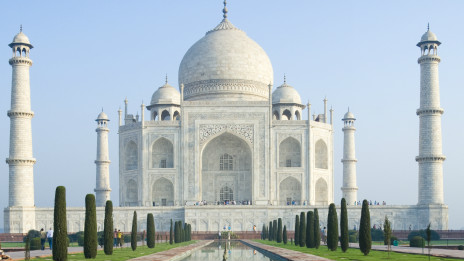Mud-pack for the Taj Mahal 泰姬陵面敷“泥巴面膜”
媒体英语会带大家一起学习 BBC 撰稿人在报道世界大事时常用到的单词和短语。

The Taj Mahal was constructed as a monument to love by the Mughal Emperor Shah Jahan
印度最著名的纪念碑泰姬陵将再次接受一次泥巴修复治疗,以清理墓碑大理石外部因污染造成的黄色污垢。这将是专家们第四次使用同样的方法来清理这座17世纪的陵墓。以下是 Joanna Jolly 为 BBC 发回的报道:
收听与下载
The white marble domes and minarets of the Taj Mahal were constructed as a monument to love by the Mughal Emperor Shah Jahan on the death of his favourite wife, nearly four hundred years ago.
In recent years, pollution from factories and a nearby oil refinery have turned its pristine walls yellow. The Archaeological Survey of India began applying mud-packs to clean the monument in the mid-1990s.
It says continuing high levels of pollution means the treatment needs to be applied again soon. The lime-rich clay mask is believed to be based on a recipe used by Indian women to restore the natural glow to their faces.
A thin layer of mud is painted on the marble and left overnight before being brushed off in the morning. The surfaces are then washed down with distilled water to remove polluting chemicals drawn from the stone and the dirt and grease left behind by millions of visitors.